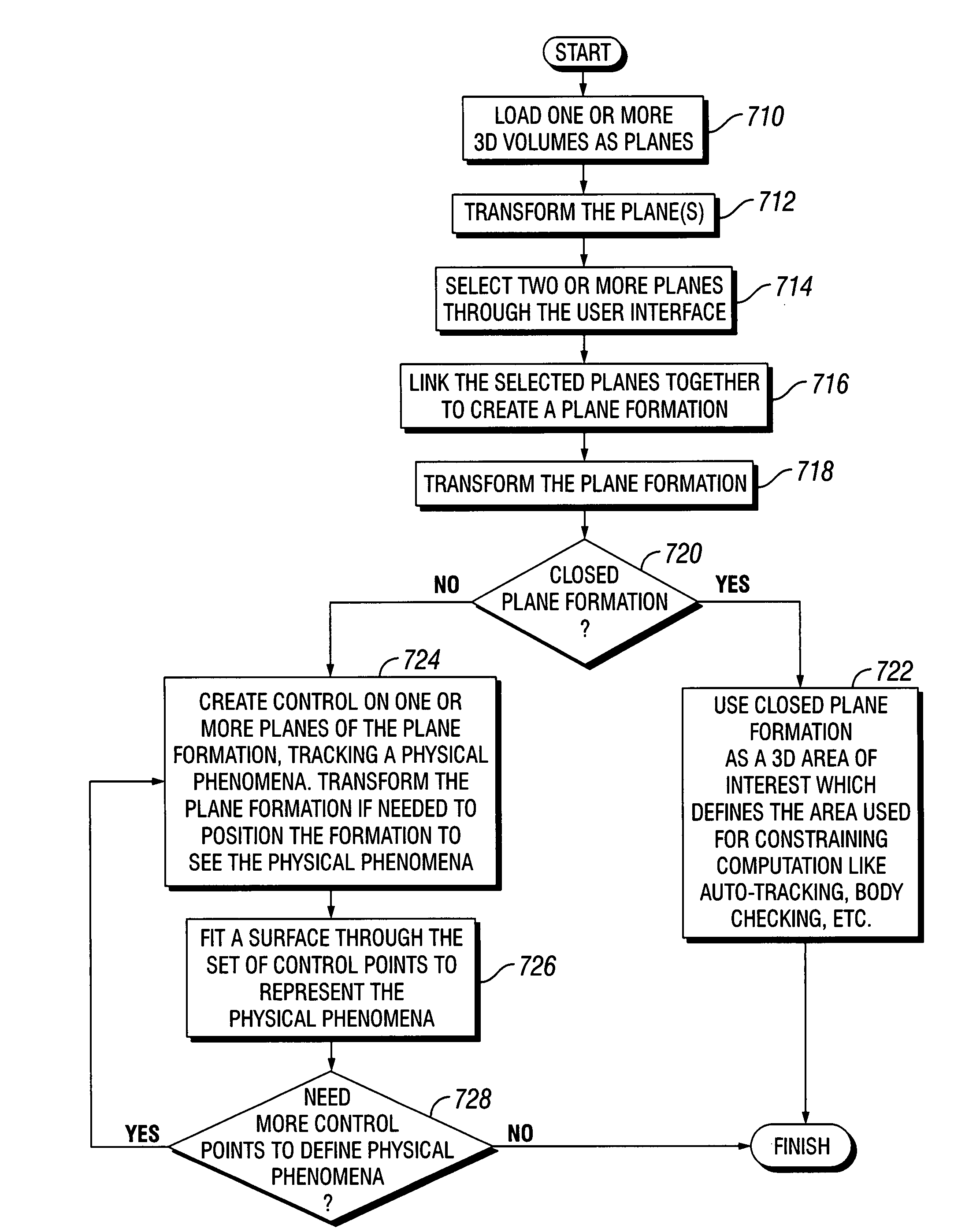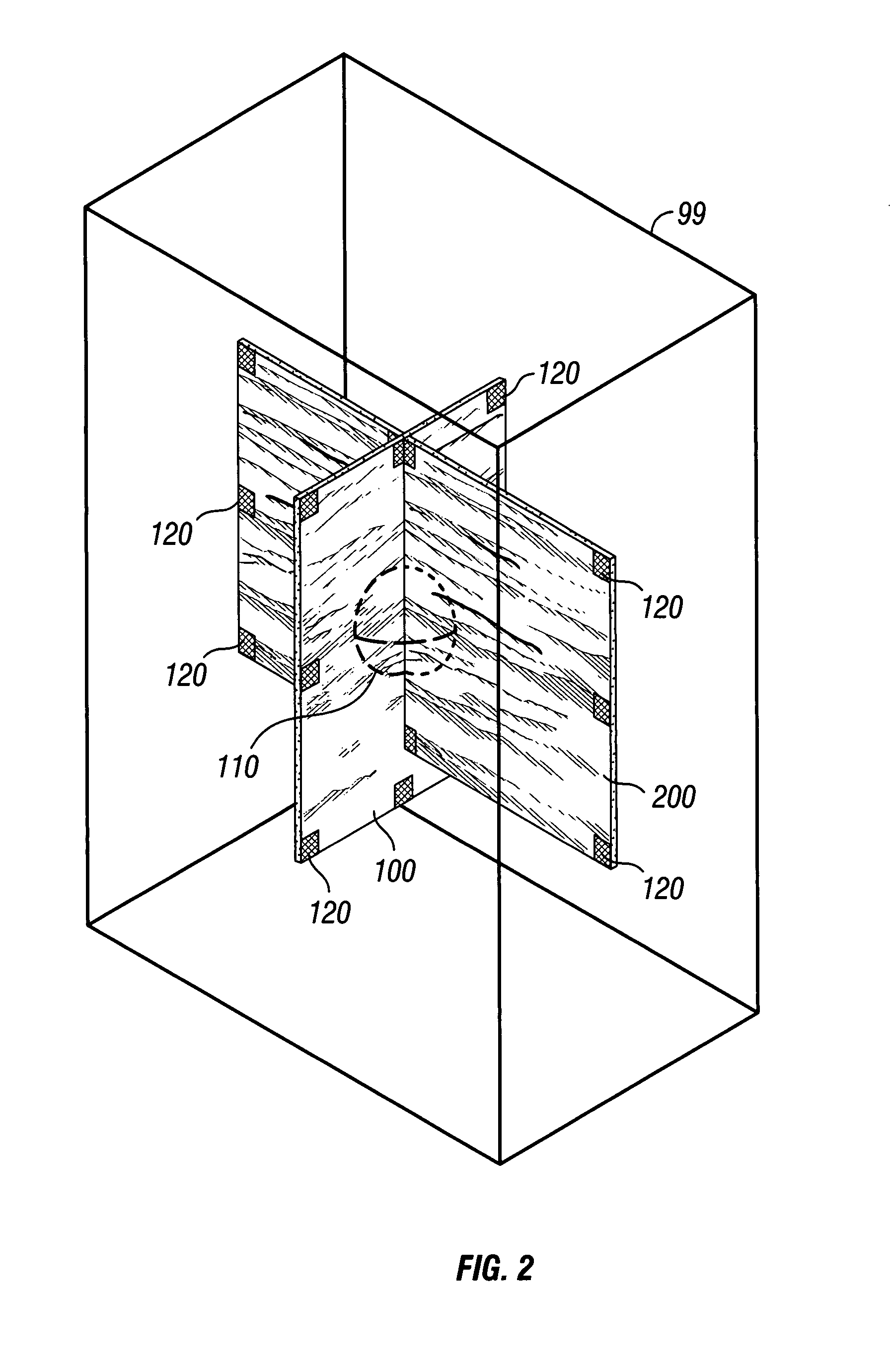3-D visualization
a multi-dimensional data volume and visualization technology, applied in the field of 3-d visualization, can solve the problems of difficult orientation of the viewed portions of a 3-d, further limitation of the ability of the user to focus, and the continued handling and/or display of 3-d data volumes, so as to achieve the effect of enhancing the ability to visualiz
- Summary
- Abstract
- Description
- Claims
- Application Information
AI Technical Summary
Benefits of technology
Problems solved by technology
Method used
Image
Examples
Embodiment Construction
[0089]In some examples of the invention, 2-D parametric surfaces consist essentially of planar slices extracted or derived, thereby created, from a data volume. Alternatively, 2-D parametric surfaces consist essentially of surfaces having shape in two or three dimensions, while not having thickness of the surface. In either case, the 2-D parametric surfaces serve as visualization surfaces. Selected attribute values from a selected data volume are displayed upon these parametric surfaces by projecting the attribute values onto the parametric surfaces where the parametric surfaces intersect the selected data volume. In some examples, multiple attribute values from one or more data volumes are projected. In further examples, differing attributes or attribute sets are projected onto different parametric surfaces. In a further example, two or more 2-D parametric surfaces are linked for purposes of translation or rotation, in unison, within the data volume or data volumes. Such linking an...
PUM
 Login to View More
Login to View More Abstract
Description
Claims
Application Information
 Login to View More
Login to View More - R&D
- Intellectual Property
- Life Sciences
- Materials
- Tech Scout
- Unparalleled Data Quality
- Higher Quality Content
- 60% Fewer Hallucinations
Browse by: Latest US Patents, China's latest patents, Technical Efficacy Thesaurus, Application Domain, Technology Topic, Popular Technical Reports.
© 2025 PatSnap. All rights reserved.Legal|Privacy policy|Modern Slavery Act Transparency Statement|Sitemap|About US| Contact US: help@patsnap.com



